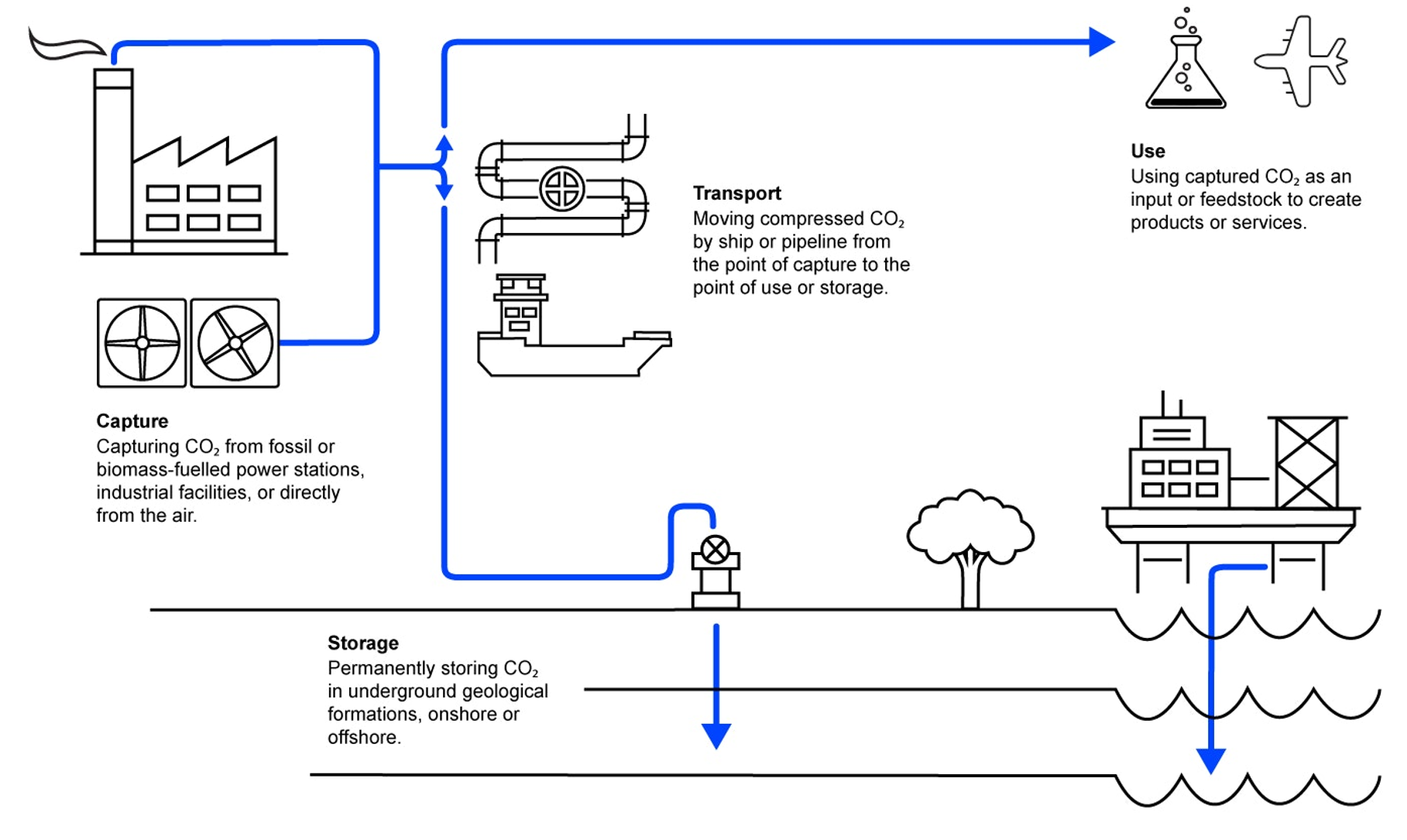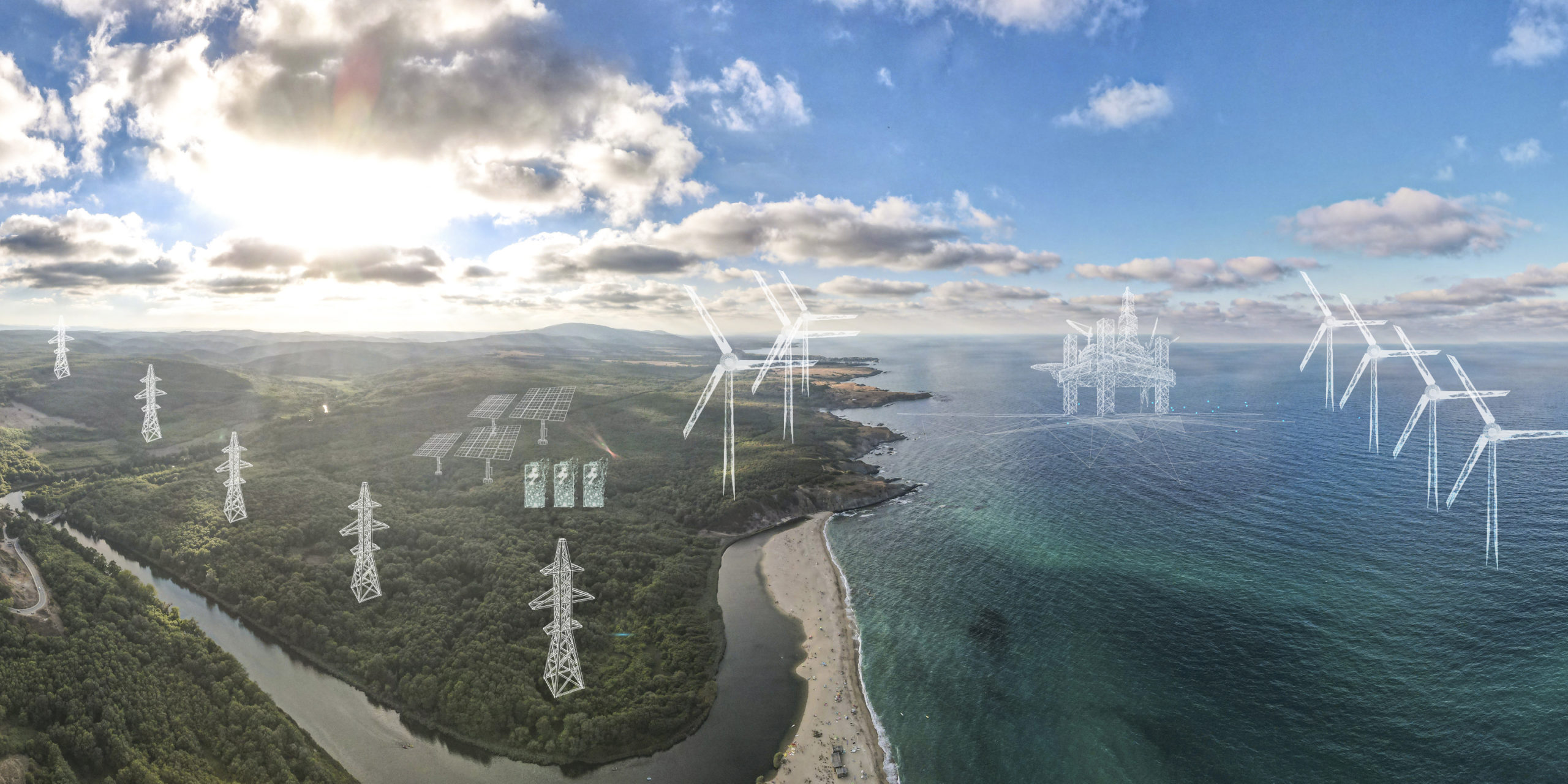The Energy Transition explained
What does ‘sustainable energy’ mean?
Sustainable energy is generally defined as that which meets our needs today without compromising our needs in the future. Fossil fuels fail the sustainability test on several fronts: if we use them all up today then they will not be available to future generations, for instance, and what we burn now compromises our ability to enjoy a stable climate and unpolluted air tomorrow.
Other energy sources may not be sustainable in the strict sense. Nuclear fission, for example, is based on a finite resource (uranium) and leaves behind radioactive waste that remains hazardous for thousands of years. Renewable energies such as wind and solar might ultimately qualify as fully sustainable—if they are made with sustainable energy themselves and can be fully recycled after use.
Why is it important, and what is driving the energy transition?
Non-sustainable energy sources, and in particular fossil fuels, create externalities—predominantly climate warming from greenhouse gas (GHG) emissions—that could have severe social and economic consequences in the future. The ‘energy transition’ is the process involved in shifting away from these sources and towards other more sustainable ones, such as energy generated from wind turbines, to avoid the externalities.
Beyond addressing GHG emissions causing climate change, an important and frequently overlooked feature of the energy transition is that it should allow humanity to tap into power sources that for practical purposes will never run out. This is significant because even if climate change did not exist then there is a good chance life as we know it would eventually grind to a halt around the end of this century, as fossil fuels ran out.
What are the main challenges to the energy transition?
For a long time, one of the main problems facing the energy transition seemed to be technical. The technologies available—primarily wind and solar—did not seem capable of sustaining society on their own. That picture is changing, however. The grid imbalances caused by intermittent renewables can increasingly be addressed through energy storage and there is growing industrial momentum behind the development of low-carbon fuels, such as hydrogen and ammonia, to power hard-to-abate industrial sectors.
While the investment required to scale up these technologies is considerable, financing does not seem to be a major problem, either. Investors see benefit in backing energy transition projects that offer steady returns, often enjoy government support and have significant growth potential. Hence, the main challenges facing the energy transition are likely to be societal and political, for example in fostering the adoption of new forms of transport or in creating regulatory frameworks that correctly reward the shift to more sustainable sources of power.
Which countries are leading the way in the energy transition?
While most major economies have now pledged to achieve net zero emissions by mid-century, leaders in the energy transition need to show progress on several fronts. The World Economic Forum publishes an Energy Transition Index that was headed by Sweden, Norway and Denmark as of 2021. Notably, half the countries in the top 10 were Nordic nations and only one, New Zealand, was outside Europe. The World Economic Forum noted that these 10 countries added up to just 2% of the global population and were responsible for only 3% of energy-related CO2 emissions. China, which produces more carbon emissions than any other nation on the planet, was ranked 68 out of 115 countries.
The United States, which is the world’s the second-largest emitter, came in at 24. All but five of the top 25 countries on the list were categorised as ‘advanced economies’ by the World Economic Forum, suggesting that the energy transition might be easier for richer nations—and could be a challenge for developing markets that are home to most of the world’s population.
What is the difference between renewable, clean and green hydrogen?
Hydrogen is a frontrunner in the quest for a more sustainable alternative to oil and natural gas. Today, most hydrogen is made via steam methane reforming, which is a carbon-intensive process. This is called grey hydrogen. But there are several ways to make the gas with lower carbon emissions. One involves using carbon capture and storage to trap the CO2 produced by steam methane reforming. Another is to electrolyse water with electricity produced via renewable sources.
Both these processes could be termed ‘clean’ because they result in lower CO2 emissions than traditional hydrogen production. But only the second qualifies as ‘renewable’ or green hydrogen because it involves inexhaustible energy supplies. The first produces what is called blue hydrogen. Completing the hydrogen colour palette, black hydrogen is made from coal gasification, brown from lignite, pink from nuclear and turquoise from methane pyrolysis.
What are examples of clean and green energy sources?
‘Clean’ and ‘green’ energy sources generally refer to renewable energies. By far the largest source of clean energy in the world is hydro power, which accounted for more than 43% of all renewables around the world in 2020, according to data from the International Renewable Energy Agency. After hydro power came wind and solar, with around 26% of total capacity each. It is worth noting that both these generation sources cover a range of technologies: you can have onshore or offshore wind energy, for example, while solar includes photovoltaics and concentrated solar power.
Beyond these three major technology categories, a host of other potential energy sources are under development. These include bioenergy, clean hydrogen, geothermal, tidal and wave power, for example. Finally, some authorities consider nuclear fission reactors to be clean energy sources because they do not produce CO2 during operation.
What is carbon capture and storage and how does it work?
Carbon capture and storage (CCS) is the name for a family of technologies designed to capture carbon emissions, either from sources of emission or directly from the atmosphere, so they can be stored and prevented from contributing to climate change. CCS involves three stages:
- Separating CO2 from other gases produced by industrial processes or present in the air.
- Compressing the CO2 and transporting it, for example via pipeline, to a carbon storage site.
- Storing the CO2 where it will not escape into the atmosphere, for example deep underground.
A similar process is carbon capture, utilisation and storage (CCUS), which effectively uses the same technologies as CCS but where the CO2 is also used as an industrial precursor, for example in the production of synthetic fuels.

How CCS and CCUS works. Source: International Energy Agency.
What is carbon offsetting and how does it work?
Carbon offsetting is the process by which a emitter can cancel out their CO2 emissions by paying for an equal amount of carbon to be removed from the atmosphere elsewhere, to achieve net zero emissions. If, for example, a company has a carbon footprint of a thousand tonnes of CO2 a year then it could pay to plant enough trees to absorb the same volume of carbon or invest in renewable energy technologies or CCS to reduce global CO2 emissions by a similar extent. Carbon offsetting is not without controversy, however.
Criticism of offset mechanisms includes that they allow the emitter to continue releasing GHGs rather than tackling the source, that they lack global standards and pricing, and that they may not work as planned. Forests can die out, for example, and renewable energy projects can fail. For these reasons, the prevailing view is that carbon offsetting should only be used as a measure of last resort after other decarbonisation tactics have been put in place.
What will the energy transition do to energy costs?
Although renewable sources such as wind and solar are available for free, using them to power our energy system will probably cost more than we pay today—to begin with, at least. The reason for this is that some key energy transition technologies, such as CCS, renewable natural gas, offshore wind energy or green hydrogen, are still relatively expensive. Also, an energy system based on renewables requires investments in transmission infrastructure and storage, which must be paid for.
Finally, companies need a financial incentive to build renewable energy plants, so developers will need a minimum price guarantee even if the power they provide is effectively free. That said, energy prices should eventually fall in most places as renewable energy investment increases and technology costs go down.
What role can the oil and gas sector play in the energy transition?
Alongside the coal industry, the oil and gas sector has fuelled the growth of the global economy. Thus, it has the expertise and the scale to be a key enabler in the energy transition.
And oil and gas companies are already making significant investments in many types of renewable resources, clean hydrogen and CCS, both to de-risk and diversify their portfolios, and to take advantage of new growth opportunities.
The oil and gas sector is also able to effectively collaborate across the value chain to enable decarbonisation, for example in industrial clusters.





